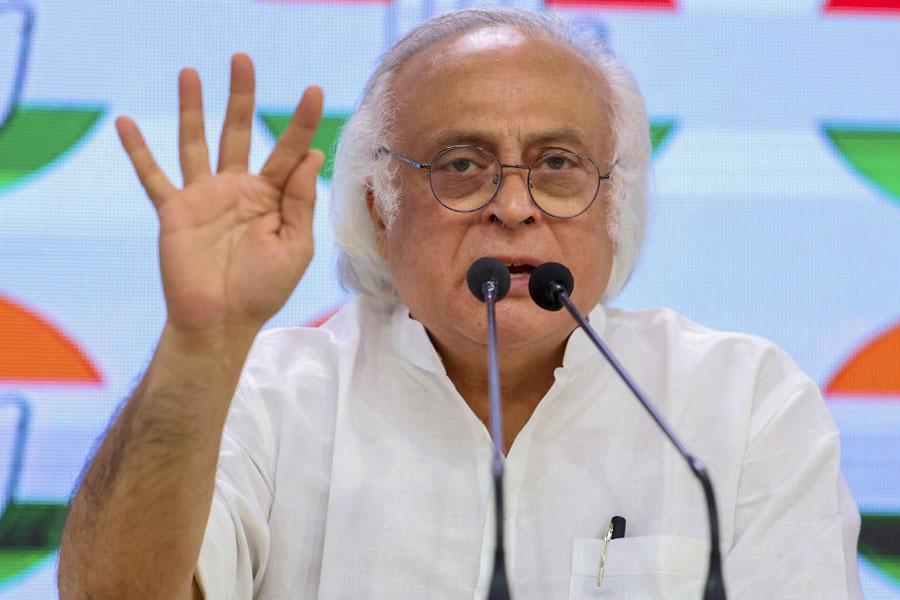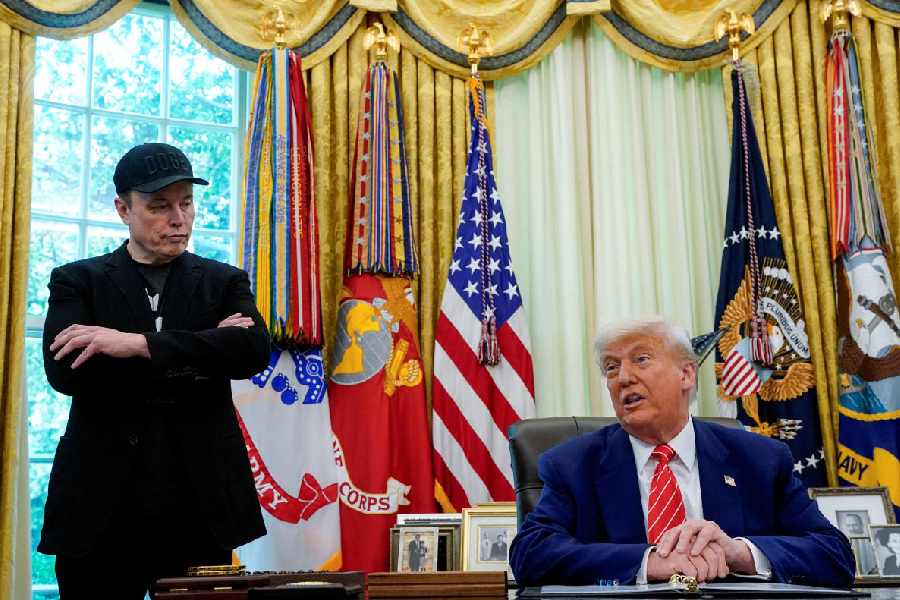 |
| A computer-generated image of a double pulsar system. Each pulsar emits radiowaves, behaving like rotating lighthouse beacons |
New Delhi, July 3: A pair of closely spaced dead stars have helped scientists to once again confirm the general theory of relativity developed by Albert Einstein 92 years ago, connecting gravity to space and time.
An international team of astronomers today reported that one of the pair of stars is wobbling — spinning like a top — in exactly the manner predicted by the relativity theory which predicts that gravity can curve space and time.
The dead stars called pulsars — remnants of massive stars that have exhausted their fuels — are 1,700 light years away from Earth. But the average distance between the two pulsars is only twice the Earth-Moon distance.
“Binary pulsars are the best place to test general relativity in a strong gravitational field,” said Victoria Kaspi, a professor of physics at McGill University, Canada, and a member of the team whose findings will appear in the journal Science tomorrow.
Pulsars spin fast and emit regular pulses of energy that can be detected by radio telescopes on Earth. The general theory of relativity predicts that the axis of one rotating star in a two-pulsar system will gradually change direction, causing a slight wobble as it orbits its companion.
In observations spanning four years, Kaspi and astronomers at the University of Manchester in the UK and the National Radio Astronomy Observatory in the US observed the effect predicted by the theory.
Although wobbles have been earlier observed in the solar system, differences between general relativity and alternative theories of gravity are expected to become apparent only in extremely strong gravity fields of pulsars, said Rene Breton, a McGill astronomer.
“So far, Einstein’s theory has passed all tests, including ours,” said Breton. The double pulsar system, discovered five years ago, has now provided the “best test we have for predictions of Einstein’s theory of gravity”, said astronomer Michael Kramer at the University of Manchester.
“Extreme gravity fields allow us to test the theory more rigorously than elsewhere,” said Yashwant Gupta, chief scientist at the National Centre for Radio Astronomy, Pune, who was not part of the team but had discovered a binary pulsar system four years ago, using India’s Giant Metrewave Radio Telescope.
“But the binary pulsar we found wasn’t the kind that could be used to study such effects,” Gupta said.











